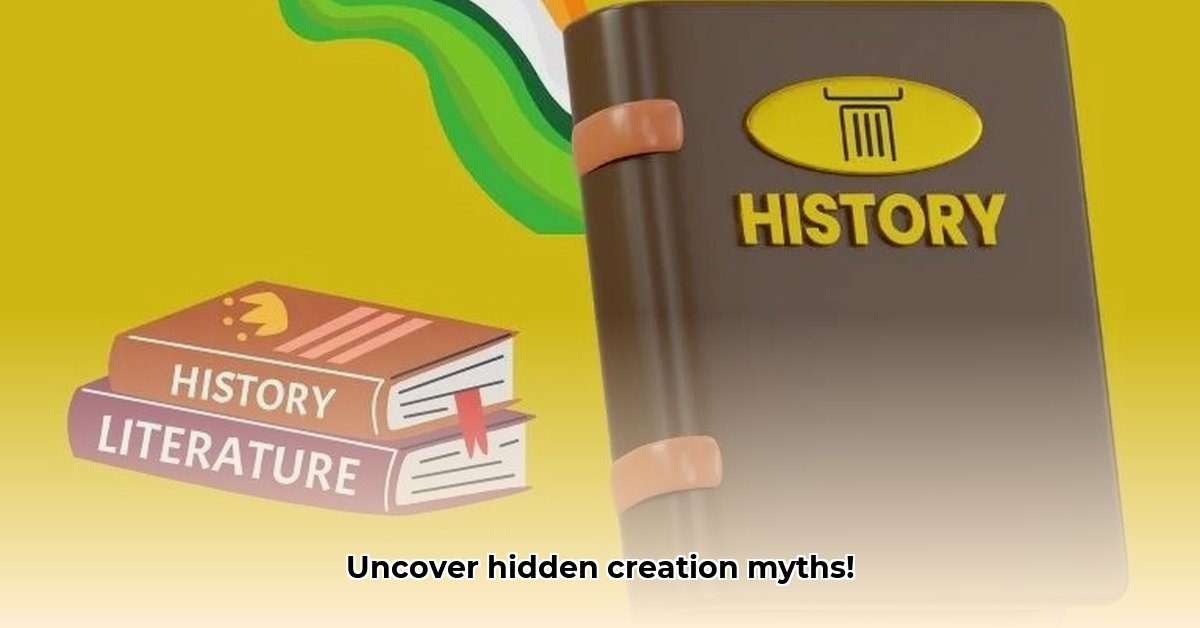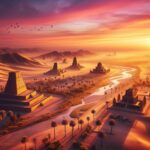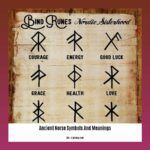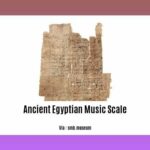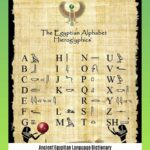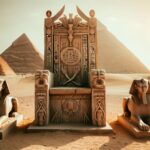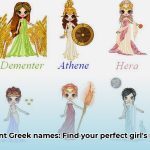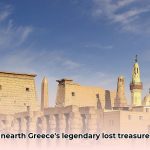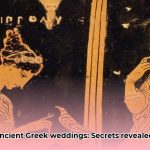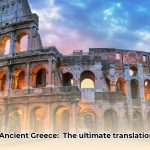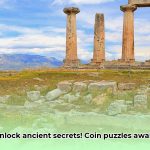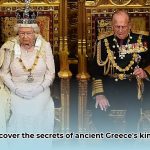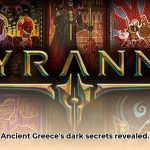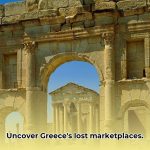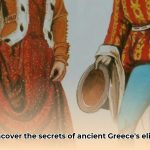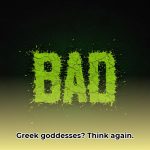From the whispers of ancient civilizations to the echoes in modern culture, creation myths stand as testaments to humanity’s enduring quest to understand our origins. This article will traverse a rich tapestry of global creation narratives, from the dramatic clashes of Norse deities to the intricate tapestry of Mayan cosmology and the ordered elegance of Egyptian genesis. We will examine shared motifs, explore cultural nuances, and delve into the profound reasons these ancient stories continue to resonate in the modern world. For more ancient history facts, check out this [fun quiz](https://www.lolaapp.com/ancient-history-trivia/). Prepare for an enthralling exploration of how our ancestors grappled with the profound questions of existence, and how their answers continue to shape our understanding of the cosmos and ourselves.
Echoes of Genesis: A Global Exploration of Creation Narratives
Let us embark on a journey into the heart of ancient creation stories, those captivating narratives that have served as the bedrock of cultures for millennia. These are not mere bedtime stories; they are potent expressions of a civilization’s core beliefs, offering invaluable insights into the worldview of our ancestors. What is it about these ancient tales that continues to captivate and intrigue us? Perhaps it lies in our inherent human desire to unravel the mysteries of existence, to trace our lineage back to the very genesis of all things. The exploration of ancient cosmologies and creation narratives offers a unique lens through which to examine the values, fears, and aspirations of societies long past.
The Primordial Canvas: Unveiling Universal Motifs in Creation Myths
Across the vast expanse of the globe, from the frigid landscapes of Norse mythology to the sun-drenched realms of ancient Egypt, civilizations crafted elaborate creation myths to explain the genesis of the universe. What is truly remarkable is the recurrence of certain motifs across these seemingly disparate narratives. Foremost among these is the concept of a primordial void – a state of utter nothingness, a dark and empty abyss, or a swirling chaos from which all creation springs forth. Visualize a painter gazing upon an untouched canvas, poised to bring forth a masterpiece. It is from this very absence that something extraordinary emerges – a cosmos teeming with life, light, and the delicate balance of order.
This pre-creation state, a boundless reservoir of untapped potential, appears time and again in creation narratives worldwide. The Norse sagas recount Ginnungagap, the yawning emptiness that preceded the birth of their world. The Egyptians envisioned Nun, the formless, watery expanse from which the first land emerged. Similarly, the cosmologies of numerous Native American tribes and the intricate Hindu tradition echo similar themes of creation arising from a state of primordial nothingness. While each tale is adorned with unique cultural embellishments, they all grapple with the same fundamental question: From whence did all existence arise? How prevalent are the themes of darkness, emptiness, and chaos in creation myths from across the world?
Cultural Inflections: A Rich Tapestry of Mythological Interpretations
While the overarching themes of creation myths often exhibit striking similarities, the specific details of these narratives diverge dramatically, reflecting the unique cultural landscapes from which they arose. Consider the diverse explanations for the creation of humankind. Did the gods meticulously mold humans from clay, as depicted in some traditions? Or did humankind emerge spontaneously, perhaps even as an unintended consequence of divine actions?
The symbolic significance of key elements also varies across cultures. While many myths emphasize the life-giving properties of water, the Norse tradition places greater emphasis on the interplay of fire and ice, likely reflecting the influence of the harsh, glacial environments in which those myths took root. These variations are not arbitrary; they are reflections of a culture’s values, beliefs, and relationship with the surrounding world. The Mayan Popol Vuh, for example, centers around the cultivation of maize, a cornerstone of Mayan society, illustrating how their creation narrative was inextricably linked to their daily lives and their understanding of the cosmos. How do the specific environmental contexts influence the symbols and narratives used in creation myths, as seen in the Norse and Egyptian examples?
Divine Architects: Gods and Goddesses of Cosmic Proportions
The divine beings who populate these creation stories are as diverse as the cultures that conceived them. Some myths feature a solitary, omnipotent creator god, such as the God of Abraham or Atum in ancient Egyptian mythology. Others portray a vast pantheon of gods and goddesses, each with their own specific roles and responsibilities in shaping the cosmos. Consider the tumultuous family dynamics of the Greek gods, whose interpersonal conflicts often had profound consequences for the mortal realm.
The nature of these creator figures varies significantly. Were they benevolent, compassionate beings, motivated by a desire to nurture and guide their creations? Or were they capricious, even malevolent, figures, whose actions were driven by self-interest or petty jealousies? These distinctions provide a fascinating window into a culture’s understanding of divinity and its relationship with the supernatural realm. They offer profound insights into the beliefs, anxieties, and moral frameworks of societies long past. How can the characteristics of the divine figures in creation myths be used to understand the moral and ethical values of the cultures that created them?
Mapping the Cosmos: Distinctive Features of Global Creation Myths
Let us now examine the distinctive features of several prominent creation myths, highlighting both the shared motifs and the unique cultural variations:
| Mythology | Initial State | Creator(s) | Creation Method | Important Symbols |
|---|---|---|---|---|
| Norse | Ginnungagap (primordial void) | Odin, Ymir, and others | Shaping from ice and fire | Yggdrasil (world tree), runes, Mjolnir (Thor’s hammer) |
| Egyptian | Nun (primordial waters) | Atum, Ra, and others | Emergence from the waters | Benben (primordial mound), scarab beetle, Ankh (symbol of life) |
| Hindu | Chaos, formless void | Brahma, Vishnu, Shiva | Emanation from cosmic egg | Lotus flower, Shiva Lingam, Om (sacred syllable) |
| Greek | Chaos (primordial state) | Gaia (Earth), Uranus (Sky), and others | Spontaneous generation/procreation | Mount Olympus, lightning bolt, olive branch |
| Mayan | Void, silent darkness | The Heart of Heaven | Creation through words/thought | Maize, blood, sacred trees, Quetzal feathers |
These creation myths transcend their status as ancient stories; they are powerful narratives that exerted a profound influence on the societies that embraced them. They provided explanations for the mysteries of existence, established moral and ethical codes, and articulated a sense of humanity’s place within the grand cosmic order. They remain potent legacies, challenging us to grapple with the fundamental questions of our beginnings and our purpose. The exploration of these myths is an ongoing endeavor, with researchers continually uncovering new layers of interpretation and understanding.
Key Takeaways:
-
Ancient creation myths, despite their diverse origins, share fundamental motifs that reflect humanity’s enduring quest to understand the mysteries of existence.
-
Comparative myth analysis entails identifying shared themes (creation from chaos, divine intervention) while also contrasting unique cultural elements (number of deities, role of humanity).
-
Cultural context exerts a profound influence on the symbolism and metaphors employed within each myth.
-
Comparing and contrasting these narratives unveils fascinating insights into the diverse worldviews and values of ancient civilizations.
Decoding Creation: Comparative Analysis of Ancestral Narratives
To truly grasp the essence of ancient creation myths, it is imperative to move beyond mere surface-level readings and delve into the deeper layers of meaning embedded within these narratives. These stories, transmitted across generations, served as vessels for the core beliefs and values of cultures long past. By understanding the similarities and differences between these myths, we can gain a profound appreciation for the diverse ways in which humanity has sought to comprehend its origins and its place within the universe.
Shared Threads: Unveiling Universal Themes in Creation Myths
Let us embark on a captivating exploration of ancient creation myths, those enduring narratives that have shaped the contours of human thought for millennia. These stories, meticulously passed down through generations, offer a portal into the hopes, fears, and cosmological understandings of cultures long since vanished. But why do so many seemingly disparate cultures share similar themes in their origin stories? What are the unifying threads that weave together these diverse narratives?
One of the most striking similarities is the recurring motif of creation arising from a state of primordial chaos. Numerous myths depict a pre-creation state of formlessness, a void, a watery expanse, or a swirling vortex of potential from which order and structure gradually emerge. Consider the Babylonian Enuma Elish, in which the gods emerge from a chaotic, primordial sea, or the Egyptian creation myth, where the world arises from the watery abyss of Nun. This widespread concept suggests a deep-seated human longing for order and meaning, a desire to find structure and coherence in a world that often appears chaotic and unpredictable. Is the desire for structure and meaning a common thread in humanity’s creation stories?
Divine Diversity: Exploring Contrasting Approaches to Divine Creation
While the transition from chaos to cosmos serves as a unifying theme, the nature of the creator(s) varies dramatically across different cultures. Some myths feature a singular, all-powerful deity, a solitary architect responsible for the design and construction of the universe. Others, however, portray a pantheon of gods and goddesses, each with their own domains and spheres of influence, working in concert to bring the world into being. The Babylonian Enuma Elish, for example, depicts a complex struggle between gods, resulting in the creation of the world, a stark contrast to the monotheistic creation narratives of the Abrahamic religions.
Similarly, the role of humanity within the cosmic order differs significantly across cultures. In some narratives, humans are created in the image of the divine, imbued with a special status and purpose. In others, humans are secondary creations, perhaps even accidental byproducts of divine actions or conflicts. These variations underscore diverse conceptions of humanity’s place within the grand scheme of things – are we central to the divine plan, or simply a small and insignificant part of a larger, indifferent universe? How do human’s roles vary across diverse creation myths?
Contextual Perspectives: How Cultural Context Shapes the Narrative
To fully comprehend ancient creation myths, it is essential to acknowledge the profound influence of cultural and environmental context. The Egyptian myths, deeply influenced by the Nile River, frequently emphasize water as a primal element, reflecting its life-giving role in their civilization. In contrast, Norse cosmology, shaped by a vastly different environment, features the primordial cow Audhumla and the giant Ymir, reflecting a rugged, ice-age landscape. The specific symbols and metaphors employed – a cosmic egg, a world tree, a creator god emerging from a lotus flower – reflect the unique cultural and environmental contexts in which these myths arose. Taking into account cultural differences, how can the use of similar images portray different meanings?
Temporal Perceptions: Examining the Narrative Structure
Another crucial aspect of understanding ancient creation myths lies in recognizing the underlying conceptions of time that inform these narratives. Some myths present a linear view of time, with a distinct beginning, middle, and end to the cosmic story. Others, however, present a cyclical worldview, in which creation and destruction are recurring events, with universes arising and falling in an endless cycle. The implications of these different perspectives on time are profound, shaping the overall narrative and theological worldview of the respective cultures.
Understanding these variations is paramount. It is not simply about identifying differences, but about examining how these differences reflect diverse cultural values, beliefs, and cosmological perspectives. By appreciating the rich tapestry of ancient creation myths, we gain a deeper understanding of humanity’s enduring quest to comprehend our origins and our place in the cosmos.
Deciphering the Divine: A Comparative Analysis of Symbolic Representations in Ancient Creation Myths
Across cultures, creation myths offer profound insights into humanity’s enduring fascination with origins. But how do these stories compare? What common threads, and unique variations, can we uncover? This section delves into the fascinating world of symbolic representations in creation myths.
Universal Genesis: From Chaos to Cosmos
Many creation narratives share a fundamental structure: a transition from primordial chaos to a structured cosmos. Think of the Babylonian Enuma Elish, where the world emerges from the slain body of Tiamat, or the Egyptian myth of Atum, who self-creates from the watery abyss. Even seemingly disparate myths resonate with this overarching theme. This suggests a shared, universal human experience forming the foundation of these myths. What do the similarities in creation structure say about society?
Divine Architects: A Diverse Cast of Divine Architects
The agents of creation vary widely. In some myths, a single god orchestrates the process. In others, a pantheon of deities collaborates. Consider the Greek gods, a family dynamic shaped by power struggles and generational shifts, compared to the Egyptian pantheon, emphasizing balance and cosmic harmony. These variations reflect distinct cultural values and societal structures. They tell us as much about the culture that created them as they do about the act of creation itself. Can you tell, from the act of creation, how societies were created?
Symbolism: Unpacking the Imagery in Ancient Myths
Going beyond narratives, we can examine the symbols employed. Water, often symbolizing the potential for life, appears frequently. Light often represents knowledge and divine power. Earth signifies stability and fertility. Some myths use a serpent as a symbol, which could represent the symbol of good and evil. But these symbols hold layered meanings, shifting across different cultural contexts. One example is the serpent: in some myths a symbol of chaos and destruction, in others, a symbol of wisdom and healing. How can the same symbol hold different meanings?
Champion of Men: A Mirroring Narrative in the Myths
Many creation myths weave together with the emergence of heroic figures. These figures, often demigods or exceptional humans, play a key role in establishing order or championing humanity. What are the roles of heroes in myths?
Visions of the Afterlife: Diverse Destinies in Creation Myths
The concept of an afterlife exists, in various forms, in many creation narratives. Some depict paradises, rewarding virtuous souls. Others show bleak hells, reserved for the wicked. And still more cultures envision cyclical concepts of rebirth and reincarnation. Understanding these beliefs is necessary to understand humanity’s universal grappling with mortality and the enduring hope for life beyond death. What universal questions do Afterlife visions pose?
Mythological Table: A Glance at Key Differences
| Mythological System | Creator(s) | Creation Process | Symbolic Imagery | Emphasis |
|---|---|---|---|---|
| Babylonian | Marduk | Defeat of Tiamat | Water, chaos, struggle | Order from chaos |
| Egyptian | Atum/ various gods | Self-creation/ emergence | Water, sun, balance | Cosmic harmony |
| Greek | Gaia & Uranus | Generational conflict | Chaos, primordial beings | Cyclical overthrow of power |
Key Takeaways:
- Comparative mythology reveals striking commonalities and intriguing differences across cultures. Many share the narrative arc from chaos to order.
- The specific details, however, reflect unique cultural values and beliefs. The agents of creation and their methods differ vastly.
- Symbolism plays a crucial role. Water, light, earth, and other elements carry diverse and layered meanings.
- Heroic figures frequently appear. Their trials and achievements often mirror the human striving for a better world.
- Beliefs about the afterlife vary greatly, reflecting differing worldviews.
Echoes of Civilization: Cultural Values Reflected in Ancient Creation Narratives: A Cross-Cultural Study
Let’s take a fascinating journey through time, exploring how ancient cultures shaped their understanding of the world through creation myths. These weren’t just whimsical tales; they were powerful expressions of a society’s deepest values and beliefs. What can these stories tell us about their creators?
Origins: A Tapestry of Origins
From the Mesopotamian Enuma Elish to the Aboriginal Australian Dreamtime stories, creation narratives reveal a surprising commonality: the need to explain existence. Each culture’s myth reflects its unique worldview, societal structures, and spiritual landscape. These ancient narratives provide answers – sometimes comforting, sometimes terrifying, always insightful.
The exploration of cultural values within creation narratives reveals striking contrasts and unexpected parallels. Myths emphasize different aspects of society, with some showcasing creator Gods, while others highlight a chaotic emergence. What is the significance of Creator Gods versus stories of chaotic emergence?
Unraveling the Myth Code: Cracking the Myths
Analyzing these myths isn’t just about deciphering the plot. It’s about understanding the underlying cultural values. For instance, some cultures emphasized a benevolent creator, reflecting a harmonious societal structure. Others depicted a more adversarial creation process, potentially mirroring internal conflicts or a struggle for survival. What does a creation process say about a society’s values?
We can further analyze the roles assigned to different figures within these narratives: Are women powerful figures or are they merely passive recipients of creation? Does the creator have human-like flaws? Are animals depicted as partners or as threats? Such details provide subtle yet crucial clues to the values of the culture.
Contrasts: Across Cultures: A Comparative Glance
| Culture | Key Features | Reflected Values |
|---|---|---|
| Ancient Egypt | Creator gods (Ra, Atum), cyclical time | Order, stability, cyclical renewal, divine authority |
| Ancient Greece | Chaos, Olympian gods, heroic figures | Order from chaos, heroism, human limitations, fate |
| Indigenous Australian | Dreamtime, ancestral beings, interconnectedness | Spirituality, interconnectedness with nature, kinship |
These are just a few examples; thousands of creation myths exist. But it’s in their comparison that the deeper patterns emerge. The study of cultural values reflected in ancient creation narratives is a journey of discovery, a testament to humanity’s enduring quest for meaning.
Ancient Legacies: The Enduring Legacy
The influence of these ancient myths extends far beyond the past. They continue to shape modern storytelling, cultural identities, and even our scientific understanding of the universe. By studying ancient creation stories, we gain a deeper appreciation for the human experience and the enduring power of myth. How do ancient myths and values live through time?
Key Takeaways:
- Ancient creation myths aren’t mere fables but powerful reflections of cultural values.
- Comparing these myths across cultures reveals both common themes and striking differences.
- The structure and characters within the myths offer insights into societal hierarchies and beliefs.
- Analyzing creator gods, the role of women, and the depiction of nature provides crucial context.
- These stories continue to resonate today, influencing modern narratives and culture.
- Uncover Timeless Ancient Greece Female Names: A Guide to Choosing the Perfect Name - August 9, 2025
- Explore Ancient Greece Artifacts: Unveiling Iconic Treasures - August 9, 2025
- Unveiling Ancient Greek Marriage: Customs & Laws Revealed - August 9, 2025
